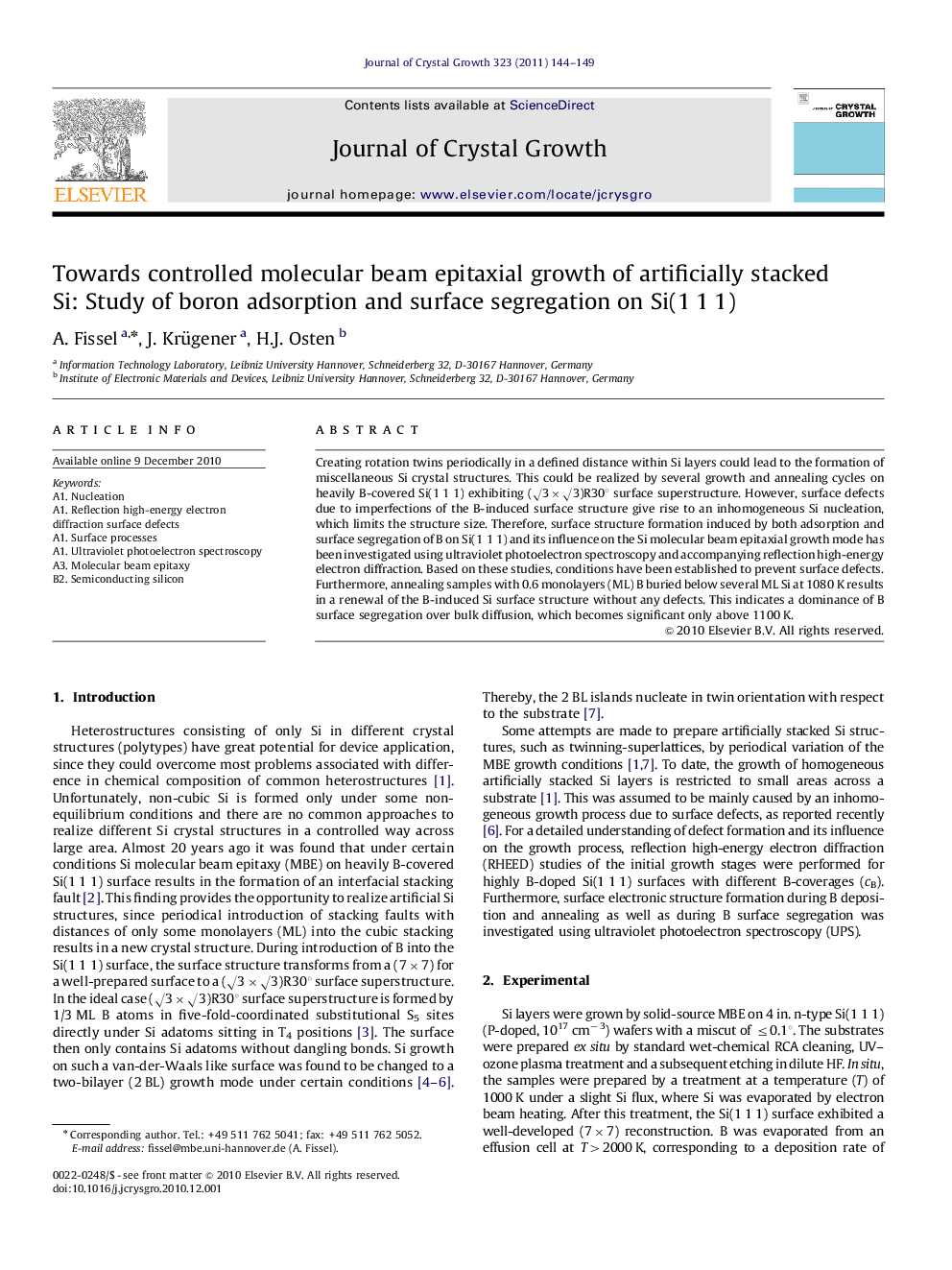| Article ID | Journal | Published Year | Pages | File Type |
|---|---|---|---|---|
| 10707248 | Journal of Crystal Growth | 2011 | 6 Pages |
Abstract
Creating rotation twins periodically in a defined distance within Si layers could lead to the formation of miscellaneous Si crystal structures. This could be realized by several growth and annealing cycles on heavily B-covered Si(1 1 1) exhibiting (â3Ãâ3)R30° surface superstructure. However, surface defects due to imperfections of the B-induced surface structure give rise to an inhomogeneous Si nucleation, which limits the structure size. Therefore, surface structure formation induced by both adsorption and surface segregation of B on Si(1 1 1) and its influence on the Si molecular beam epitaxial growth mode has been investigated using ultraviolet photoelectron spectroscopy and accompanying reflection high-energy electron diffraction. Based on these studies, conditions have been established to prevent surface defects. Furthermore, annealing samples with 0.6 monolayers (ML) B buried below several ML Si at 1080 K results in a renewal of the B-induced Si surface structure without any defects. This indicates a dominance of B surface segregation over bulk diffusion, which becomes significant only above 1100 K.
Related Topics
Physical Sciences and Engineering
Physics and Astronomy
Condensed Matter Physics
Authors
A. Fissel, J. Krügener, H.J. Osten,
